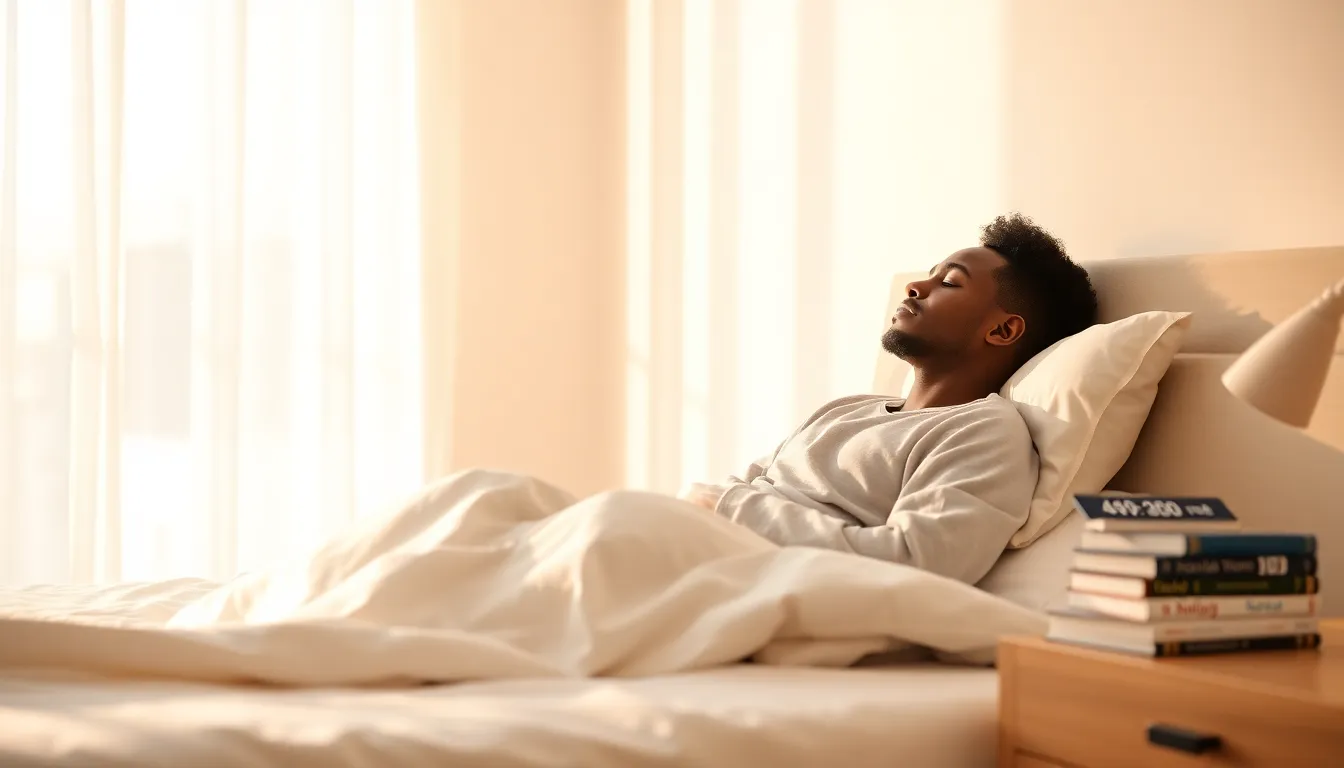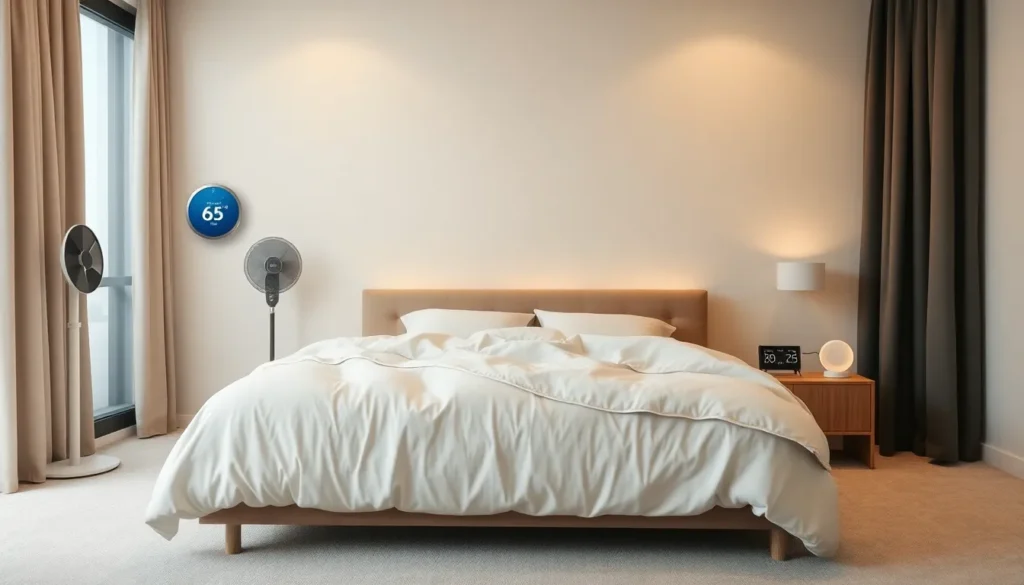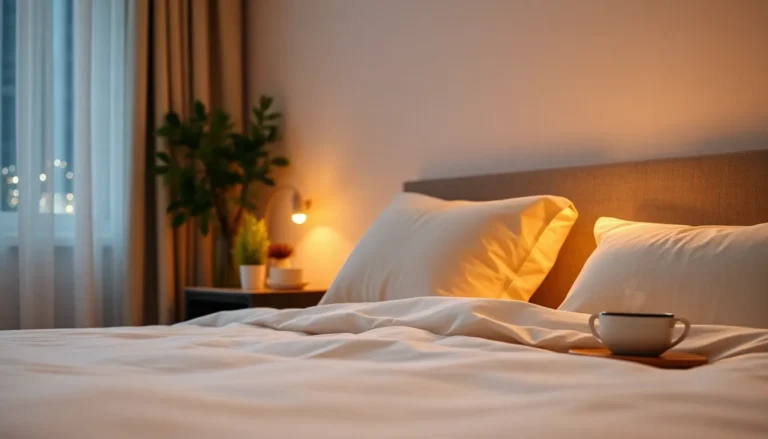Imagine stepping into a room that feels like a gentle hug, where the air is just cool enough to keep you cozy without turning you into a popsicle. Sounds fantastic, right? Creating your ideal sleep environment, also known as your sleep build, can feel like an elusive quest, but it doesn’t have to be. In this guide, we’ll navigate through sleep quality, schedules, and the essential ingredients for the perfect sleep sanctuary. So buckle up and get ready to transform those restless nights into peaceful slumbers.
Table of Contents
ToggleUnderstanding Sleep Quality

Sleep quality is crucial for physical, mental, and emotional well-being. But, what exactly constitutes quality sleep? The key factors include the amount of time spent sleeping, how quickly one falls asleep, and the number of times one wakes during the night. Studies show that adults should strive for about seven to nine hours of sleep to promote optimal health. Quality sleep not only helps to improve mood and cognitive function, but it also enhances the body’s ability to recover and regenerate.
To truly grasp the importance of sleep quality, consider this: It plays a significant role in memory consolidation. When people sleep, their brains process and integrate new information, making it easier to recall later. So, ensuring high-quality sleep can enhance both learning and performance. So, the next time someone says they’re hitting the snooze button too often, remind them they might just be hitting a mental brick wall with less sleep.
The Importance of a Sleep Schedule
A consistent sleep schedule might seem like a no-brainer, yet many individuals still struggle with maintaining one. When it comes to sleep, your body loves routine. Going to bed and waking up at the same time each day helps regulate the body’s internal clock, or circadian rhythm. This can make falling asleep easier and improve sleep quality over time. With a bit of practice, the body can signal it’s time to wind down, leading to more restful slumbers.
Studies indicate that those who adhere to a sleep schedule find it easier to stay alert and focused during the day. Unpredictable sleep patterns can lead to increased fatigue and mood swings. So, if you want to feel like a superhero during the day, keep your sleep schedule consistent. It’s almost like giving your body a secret decoder ring for better rest.
Key Elements of a Sleep-Friendly Environment
Creating a sleep-friendly environment can impact the quality of sleep dramatically. Here are three key elements to consider:
1. Mattress and Bedding Selection
Everyone deserves a mattress that feels like a cloud. When shopping for one, individuals should look for options that cater to personal preferences about firmness and support. A good mattress can mean the difference between counting sheep and bathing in restful, uninterrupted sleep. Choose bedding made of breathable materials like cotton or bamboo to regulate temperature while you sleep.
2. Room Temperature and Ventilation
Did you know that the ideal room temperature for sleeping is around 60 to 67 degrees Fahrenheit? Keeping the room cool can greatly enhance sleep quality. Adequate ventilation is another vital aspect. Air circulation can help prevent stuffiness and promote a healthier sleep environment. Consider using a fan if the air feels stagnant or even open a window if weather permits.
3. Light and Sound Control
Light and sound can be significant sleep disruptors. Investing in blackout curtains and sound machines can make a world of difference. These tools can effectively block out distractions from the outside world. For those who enjoy a bit of white noise, a gentle hum can be soothing. Nix those blaring lights and loud disturbances, and create a space that beckons sleep.
Technological Aids for Better Sleep
Technology can be a double-edged sword when it comes to sleep. On one hand, the blue light emitted from screens can hinder melatonin production, but on the other, it can be a fantastic resource for monitoring and improving sleep habits. Sleep trackers, apps, and even smart alarms can help individuals optimize their sleep patterns.
Many sleep tracking devices monitor heart rate and movement throughout the night and provide valuable insight into sleep cycles. Plus to that, meditation and sleep aid apps can offer calming sounds or guided meditations tailored for better sleep. Even though some tech being a distraction, thoughtfully integrating the right tools can foster a more sleep-friendly lifestyle.
Mindfulness and Relaxation Techniques
In our fast-paced world, carving out time to relax before bed is essential. Mindfulness practices can significantly enhance sleep quality. Techniques like deep breathing, progressive muscle relaxation, and guided imagery can be beneficial in reducing anxiety and creating a peaceful mindset for sleep. Not only are these practices effective, but they’re accessible to anybody wanting to improve their nighttime routine.
For instance, spending just a few minutes focusing on breath can calm a racing mind. Besides, engaging in light stretching can help release tension built up throughout the day. Incorporating these relaxation techniques into a nightly routine can make tired eyes sparkle with newfound vigor.



